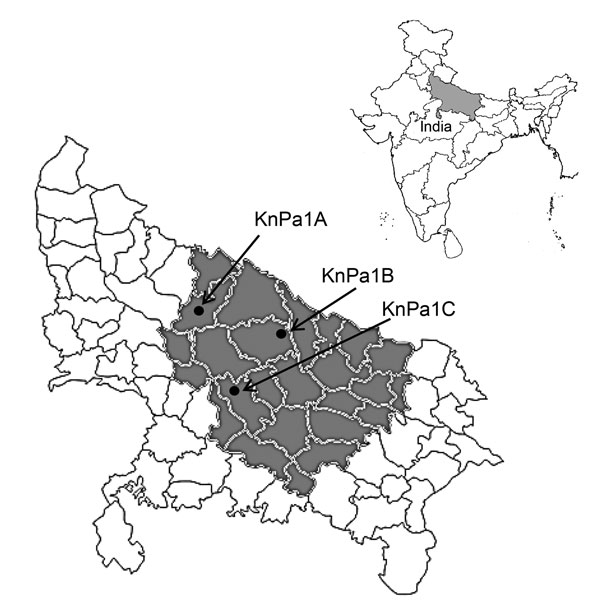Volume 21, Number 11—November 2015
Dispatch
RmtC and RmtF 16S rRNA Methyltransferase in NDM-1–Producing Pseudomonas aeruginosa
Figure 1

Figure 1. Location of Uttar Pradesh state, India, showing geographic location of patients infected with 16S rRNA methyl transferase–positive Pseudomonas aeruginosa (gray shading) and RmtC-positive isolates KnPa1A, KnPa1B, and KnPa1C (black dots); KnPa1B was also positive for RmtF. Inset shows location of Uttar Pradesh within India.
Page created: October 19, 2015
Page updated: October 19, 2015
Page reviewed: October 19, 2015
The conclusions, findings, and opinions expressed by authors contributing to this journal do not necessarily reflect the official position of the U.S. Department of Health and Human Services, the Public Health Service, the Centers for Disease Control and Prevention, or the authors' affiliated institutions. Use of trade names is for identification only and does not imply endorsement by any of the groups named above.